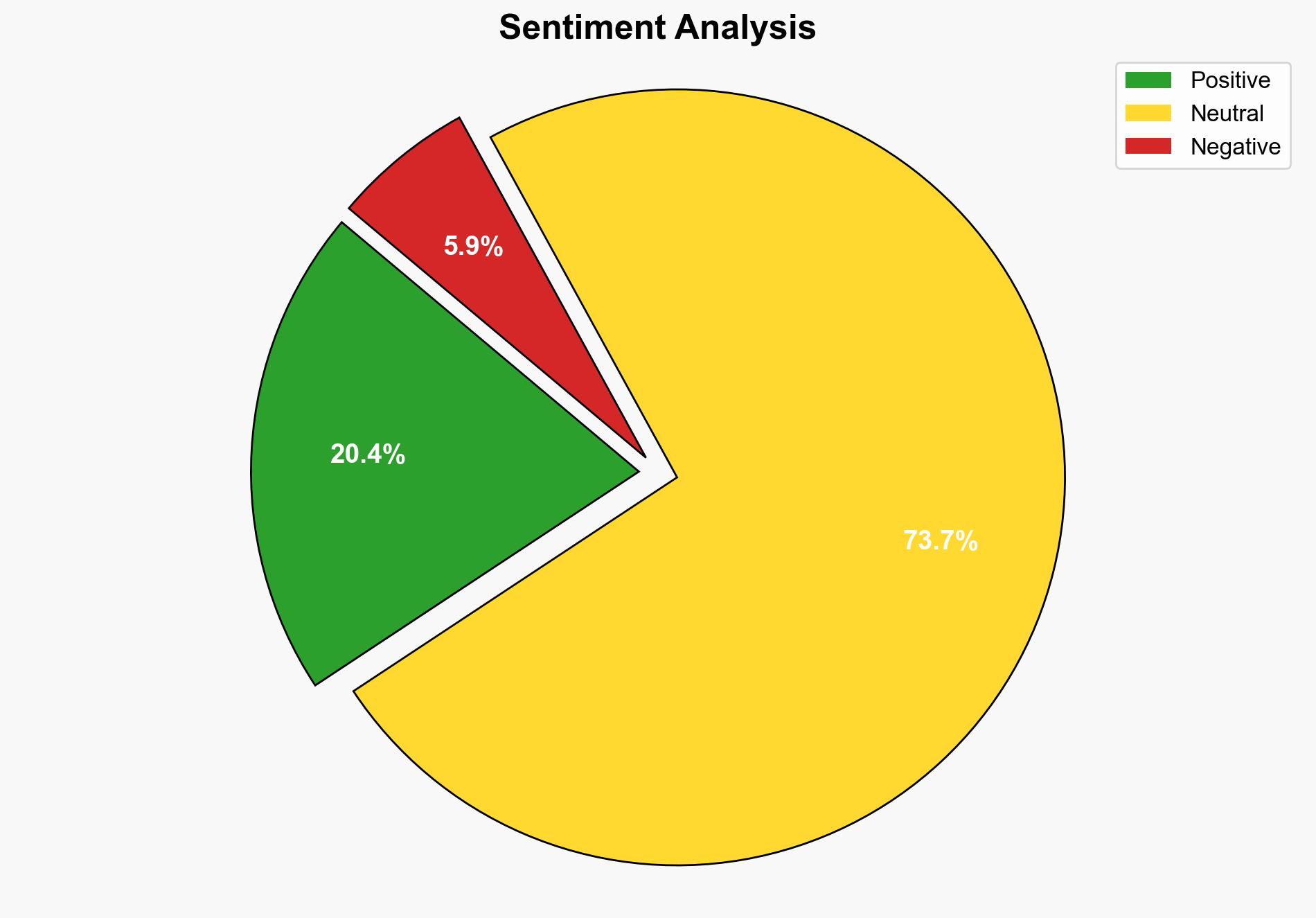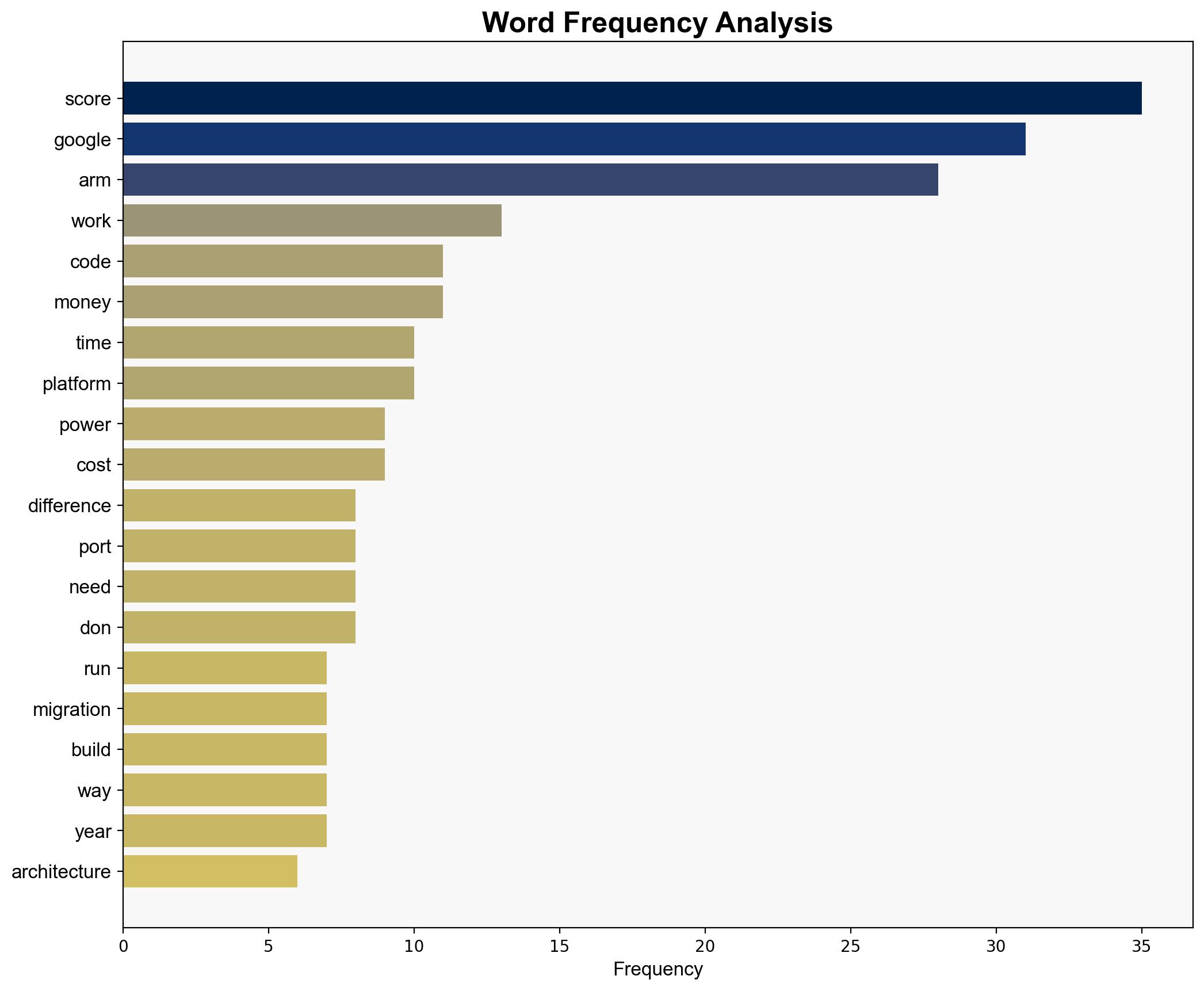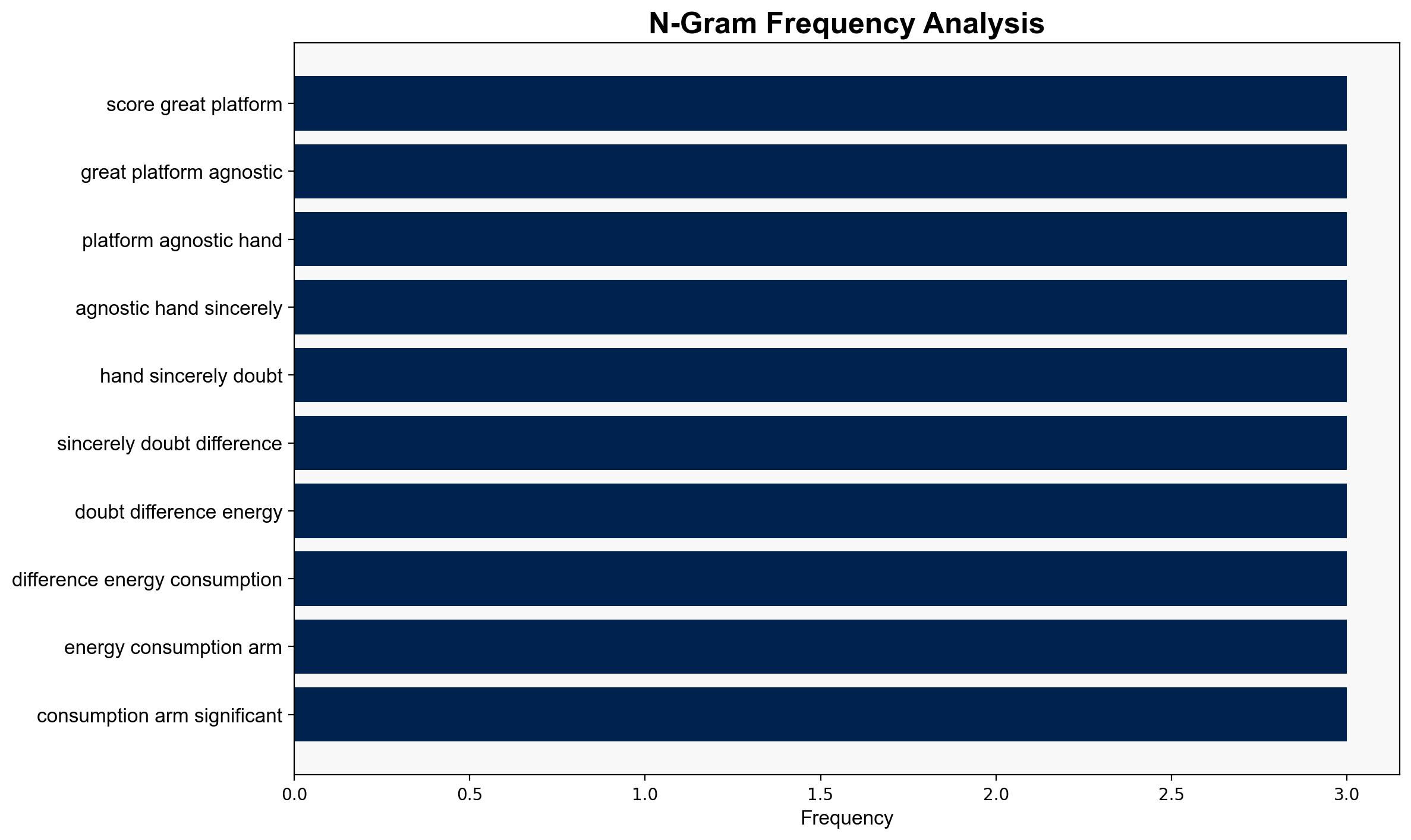Google Porting All Internal Workloads To Arm – Slashdot.org
Published on: 2025-10-23
Intelligence Report: Google Porting All Internal Workloads To Arm – Slashdot.org
1. BLUF (Bottom Line Up Front)
Google’s strategic shift to port internal workloads to Arm architecture, utilizing custom Axion chips, is likely driven by cost efficiency and performance gains. The most supported hypothesis is that this transition is primarily for economic and operational optimization. Confidence level: Moderate. Recommended action: Monitor the transition for potential cybersecurity implications and industry ripple effects.
2. Competing Hypotheses
1. **Economic and Operational Optimization Hypothesis**: Google’s migration to Arm is driven by the need to reduce costs and improve performance metrics, as indicated by claims of better price-performance ratios and energy efficiency.
2. **Strategic Technological Advancement Hypothesis**: The shift is part of a broader strategic initiative to gain technological independence and innovation, reducing reliance on traditional x86 architectures and potentially setting a new industry standard.
3. Key Assumptions and Red Flags
– **Assumptions**: The economic hypothesis assumes that the cost savings and performance improvements are significant enough to justify the transition. The technological hypothesis assumes that Arm architecture will continue to advance and meet Google’s future needs.
– **Red Flags**: Lack of detailed performance benchmarks and potential over-reliance on internal reports. The success rate of the CogniPort tool might be overstated without independent verification.
– **Blind Spots**: Potential cybersecurity vulnerabilities during the transition phase and the impact on Google’s partnerships with existing chip manufacturers.
4. Implications and Strategic Risks
– **Economic Implications**: If successful, Google’s transition could pressure competitors to follow suit, impacting the broader semiconductor market.
– **Cybersecurity Risks**: Transitioning critical services like YouTube and Gmail to a new architecture may expose vulnerabilities during the migration phase.
– **Geopolitical Risks**: As a major tech player, Google’s architectural shift could influence global tech standards and affect international tech alliances.
5. Recommendations and Outlook
- **Mitigation**: Implement robust cybersecurity measures during the transition to protect against potential vulnerabilities.
- **Exploitation**: Leverage the transition to negotiate better terms with chip suppliers and explore partnerships with emerging Arm-based technology providers.
- **Scenario Projections**:
– **Best Case**: Successful migration leads to significant cost savings and sets a new industry standard.
– **Worst Case**: Transition exposes critical vulnerabilities, leading to data breaches and operational disruptions.
– **Most Likely**: Gradual transition with moderate cost savings and performance improvements, influencing industry trends.
6. Key Individuals and Entities
– Parthasarathy Ranganathan
– Wolff Dobson
– Google
– Arm Holdings
7. Thematic Tags
technology innovation, economic strategy, cybersecurity, semiconductor industry





